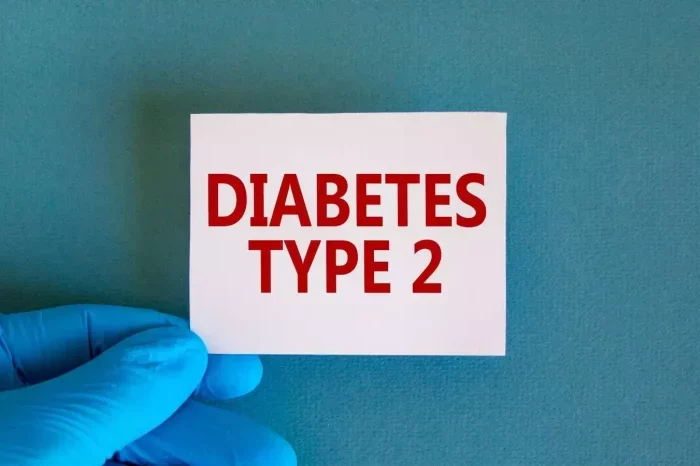Type 2 diabetes mellitus (T2DM) presents a significant challenge in contemporary healthcare, affecting millions worldwide. Its complex interplay of genetic predisposition, lifestyle factors, and metabolic dysregulation requires a nuanced approach to management. Among the cornerstones of treatment are medications designed to improve glycemic control and mitigate associated risks. However, the quest for the safest medication remains an ongoing pursuit, considering the diverse patient population and their unique clinical profiles. In this comprehensive review, we explore the landscape of T2DM medications, dissecting their safety profiles to guide clinical decision-making towards optimal patient outcomes.
Understanding Safety in T2DM Medications
Safety in T2DM medication encompasses several dimensions, including efficacy, tolerability, and long-term adverse effects. While achieving glycemic targets is paramount, it must not come at the expense of increased cardiovascular risk, weight gain, or hypoglycemia. Moreover, patient-specific factors such as comorbidities, age, and renal function play pivotal roles in medication selection. Therefore, identifying the safest option necessitates a balanced appraisal of these factors.
Metformin: A Foundation of Safety
Metformin stands as the cornerstone of T2DM therapy due to its established safety and efficacy profile. As a biguanide, its mechanism of action primarily involves decreasing hepatic glucose production and enhancing insulin sensitivity in peripheral tissues. Beyond glycemic control, metformin offers cardiovascular benefits and is weight-neutral, making it an attractive choice across diverse patient populations. However, its gastrointestinal side effects, particularly diarrhea and abdominal discomfort, limit tolerability in some individuals. Renal impairment represents a contraindication to metformin use due to the risk of lactic acidosis, necessitating cautious dosing adjustments in patients with compromised renal function.
SGLT2 Inhibitors: Safety Beyond Glycemic Control
Sodium-glucose co-transporter 2 (SGLT2) inhibitors have emerged as a class of medications with multifaceted benefits in T2DM management. By inhibiting renal glucose reabsorption, they promote glycosuria, leading to improved glycemic control, weight loss, and blood pressure reduction. Additionally, SGLT2 inhibitors exhibit favorable cardiovascular and renal outcomes, as evidenced by landmark trials such as EMPA-REG OUTCOME and CANVAS. However, concerns regarding genital mycotic infections, urinary tract infections, and euglycemic diabetic ketoacidosis (DKA) underscore the importance of patient education and vigilant monitoring during therapy initiation.
GLP-1 Receptor Agonists: Balancing Safety and Efficacy
Glucagon-like peptide-1 (GLP-1) receptor agonists offer a unique therapeutic approach by mimicking the action of endogenous GLP-1, thereby enhancing glucose-dependent insulin secretion, delaying gastric emptying, and suppressing appetite. These mechanisms translate into potent glycemic control, weight loss, and cardiovascular benefits, as demonstrated in trials such as LEADER and SUSTAIN-6. Despite their overall favorable safety profile, GLP-1 receptor agonists may cause gastrointestinal side effects, including nausea and vomiting, particularly during initial titration. Additionally, concerns regarding pancreatitis and pancreatic cancer necessitate cautious use in patients with a history of pancreatic disease.
DPP-4 Inhibitors: Safety in Simplicity
Dipeptidyl peptidase-4 (DPP-4) inhibitors exert their antidiabetic effects by prolonging the action of endogenous incretin hormones, thereby enhancing glucose-dependent insulin secretion and suppressing glucagon release. Sitagliptin, saxagliptin, and linagliptin constitute the major agents within this class, offering convenient oral administration and a low risk of hypoglycemia. While generally well-tolerated, DPP-4 inhibitors may increase the risk of upper respiratory tract infections and have been associated with rare cases of pancreatitis and joint pain. Moreover, their modest efficacy in reducing HbA1c levels may necessitate combination therapy with other antidiabetic agents to achieve optimal glycemic control.
Insulin: Navigating Safety Challenges
Insulin therapy remains a mainstay in T2DM management, especially in advanced disease stages characterized by significant beta-cell dysfunction. While highly effective in lowering blood glucose levels, insulin therapy carries inherent risks of hypoglycemia, weight gain, and injection site reactions. Furthermore, the risk of cardiovascular events and cancer has been a subject of debate, warranting further investigation. Modern insulin analogs, including basal and prandial formulations, offer improved pharmacokinetic profiles and reduced hypoglycemia risk compared to traditional human insulins. However, individualizing insulin regimens based on patient characteristics and preferences is crucial to optimizing safety and adherence.
Combination Therapy: Maximizing Benefits, Minimizing Risks
In real-world practice, achieving and maintaining glycemic control often necessitates combination therapy involving multiple antidiabetic agents with complementary mechanisms of action. While combination regimens offer synergistic benefits in terms of glycemic control and weight management, they also raise concerns regarding polypharmacy-related adverse effects and medication adherence. Therefore, a stepwise approach guided by evidence-based guidelines and patient-centered principles is essential to mitigate risks and optimize outcomes.
Conclusion
The pursuit of the safest type 2 diabetes medication remains an ongoing endeavor, shaped by evolving evidence, clinical experience, and patient preferences. While each class of antidiabetic agents offers distinct advantages and safety profiles, no single medication stands as universally superior. Instead, individualized treatment algorithms that consider patient-specific factors and treatment goals are imperative to achieving optimal outcomes while minimizing risks. Through a comprehensive understanding of the safety profiles of available medications and a commitment to shared decision-making, healthcare providers can navigate the complexities of T2DM management with confidence and efficacy.
Related topics:
How Many Carbs Should Type 2 Diabetic Eat Daily?
























